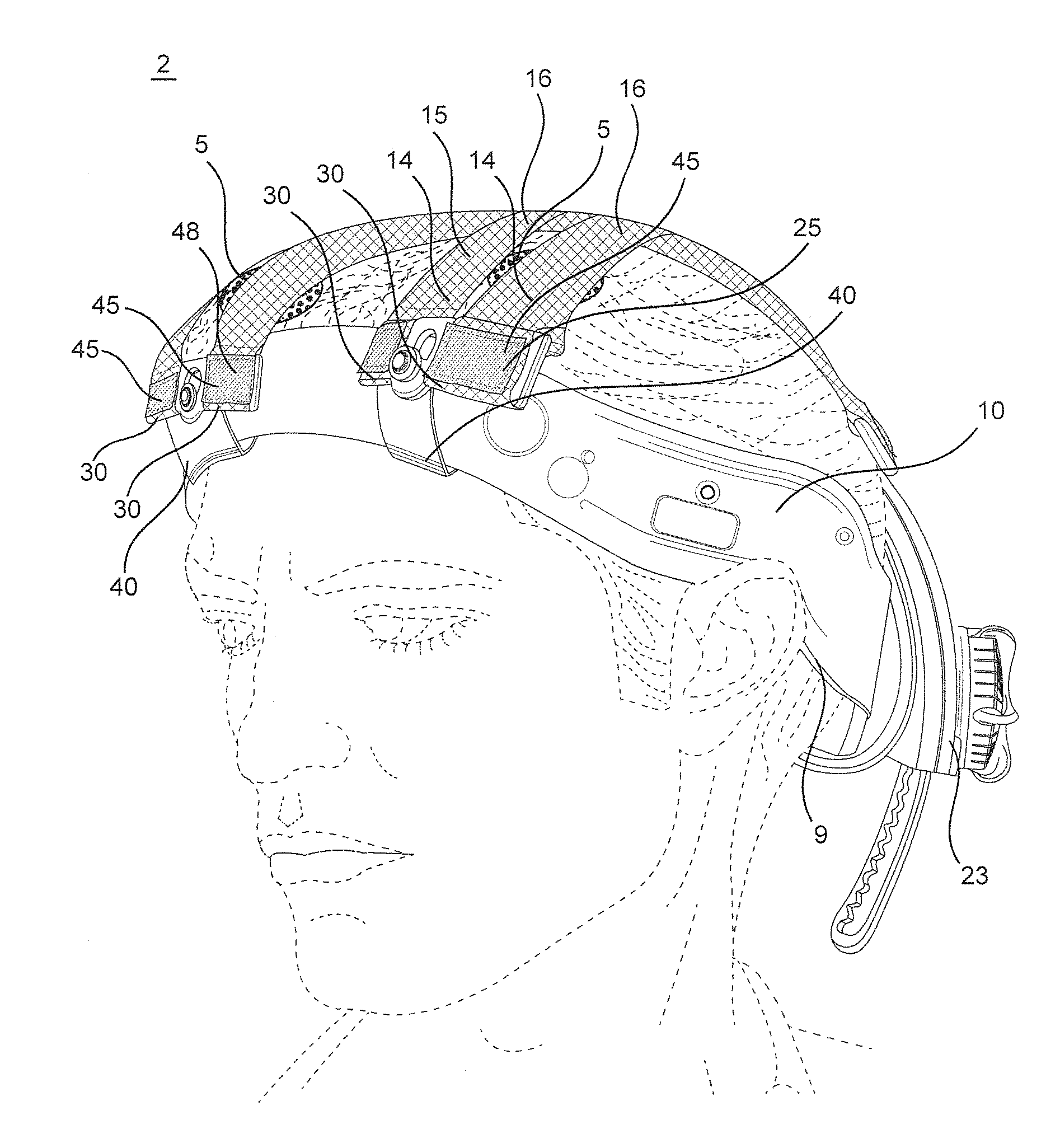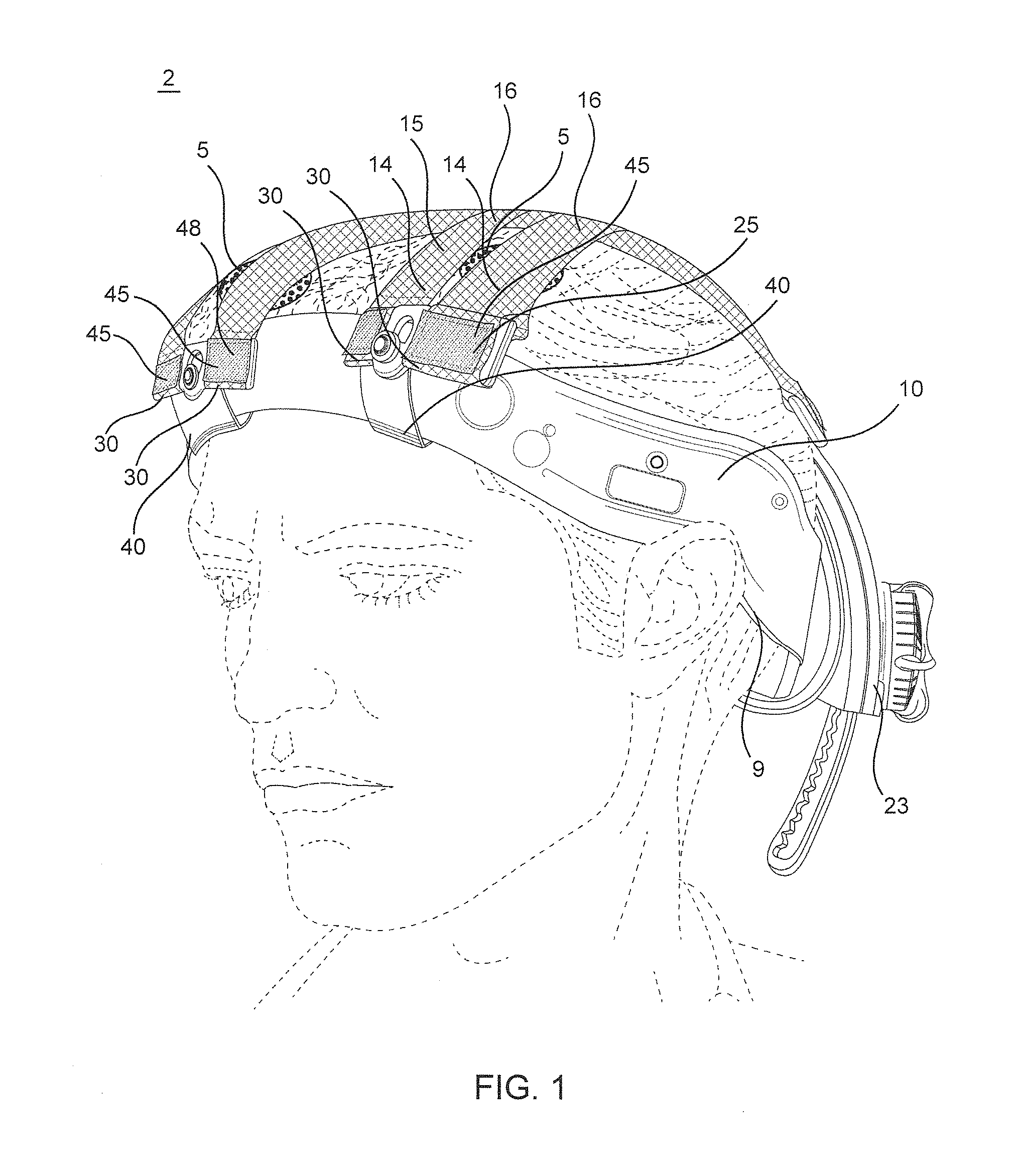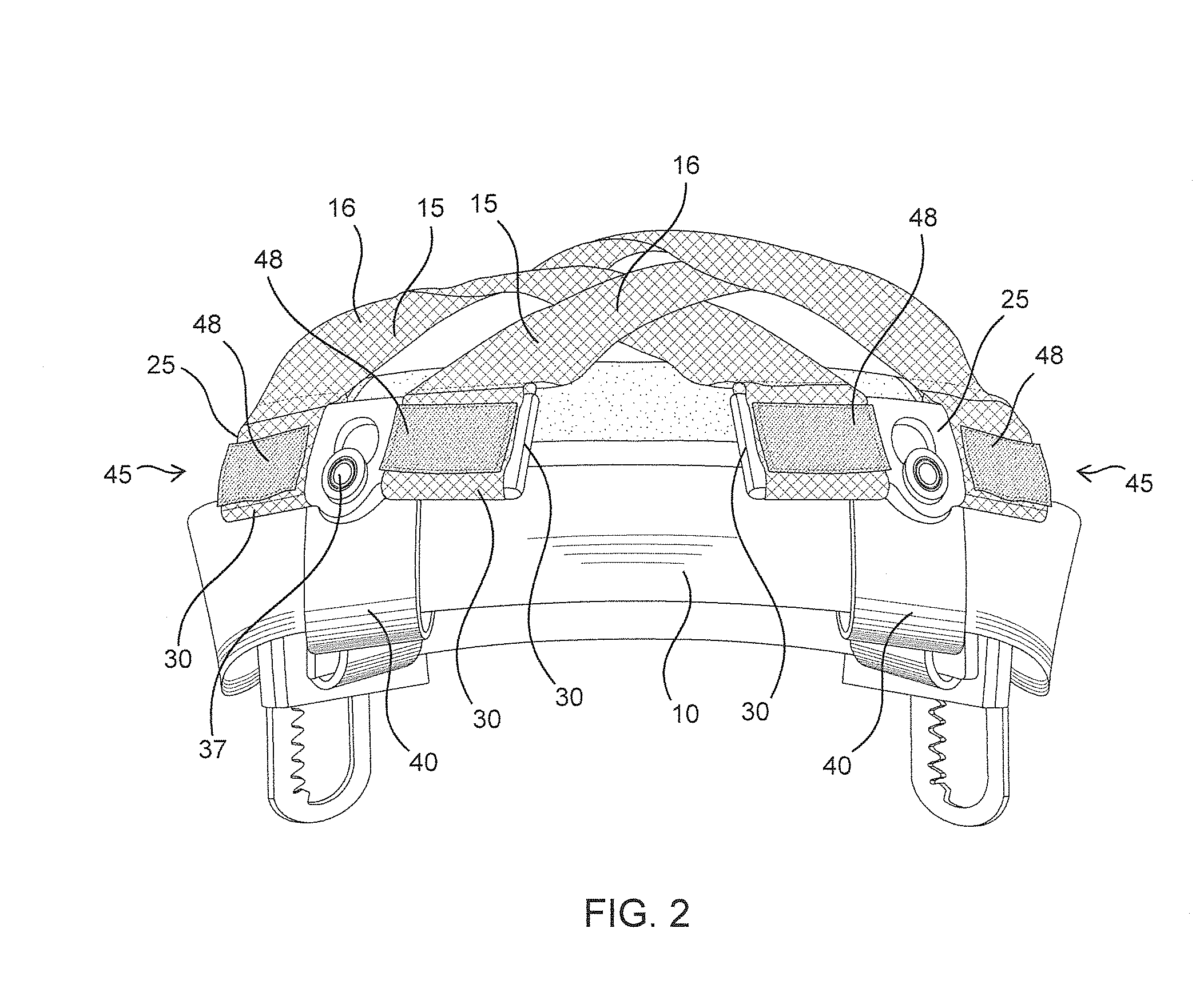Electrode-retaining headband
a technology of electrodes and headbands, applied in the field of electrodes retaining headbands, can solve the problems of lessening the definition of the electrical contact patch of the electrode, increasing the creep of the elastic bandage up and off the head, so as to achieve the effect of increasing comfor
- Summary
- Abstract
- Description
- Claims
- Application Information
AI Technical Summary
Benefits of technology
Problems solved by technology
Method used
Image
Examples
Embodiment Construction
[0023]With reference to FIGS. 1, 3, 6 and 7, the electrode-retaining headband 2 consists of a main frame 10, adjustable and for mounting on the head of a patient, having one or more straps 15, each strap composed of one or more strips 16, each strap 15 connected at its ends 14 to opposite sides of the main frame 10 for retaining electrodes 5 against the head (shown in stippled lines). Each of the straps 15 is removably attached to approximately opposite sides of the frame 10 by curved supports 25. The frame fits more or less circumferentially around the head, from forehead to the rear of the cranium and above the ears at the side, and is adjustable for different head sizes by an adjustable mechanism 7 such as a gear mechanism, hook-and-loop fasteners, snaps or ratchets, as are known in the art for hats, hardhats, helmets and caps. The frame 10 may have a cushion 11 therein for contact with the forehead, as well as a rear cushion 12 for contact with the occipital area at the rear of ...
PUM
 Login to View More
Login to View More Abstract
Description
Claims
Application Information
 Login to View More
Login to View More - R&D
- Intellectual Property
- Life Sciences
- Materials
- Tech Scout
- Unparalleled Data Quality
- Higher Quality Content
- 60% Fewer Hallucinations
Browse by: Latest US Patents, China's latest patents, Technical Efficacy Thesaurus, Application Domain, Technology Topic, Popular Technical Reports.
© 2025 PatSnap. All rights reserved.Legal|Privacy policy|Modern Slavery Act Transparency Statement|Sitemap|About US| Contact US: help@patsnap.com



